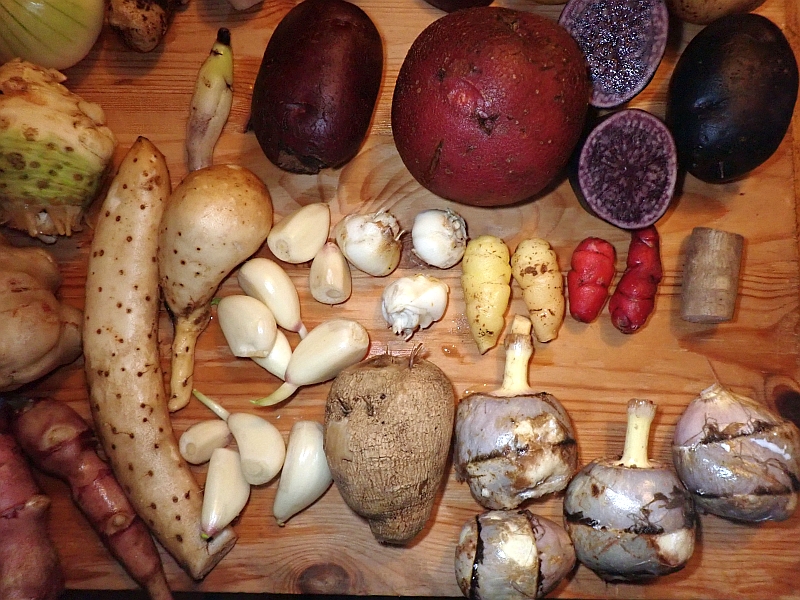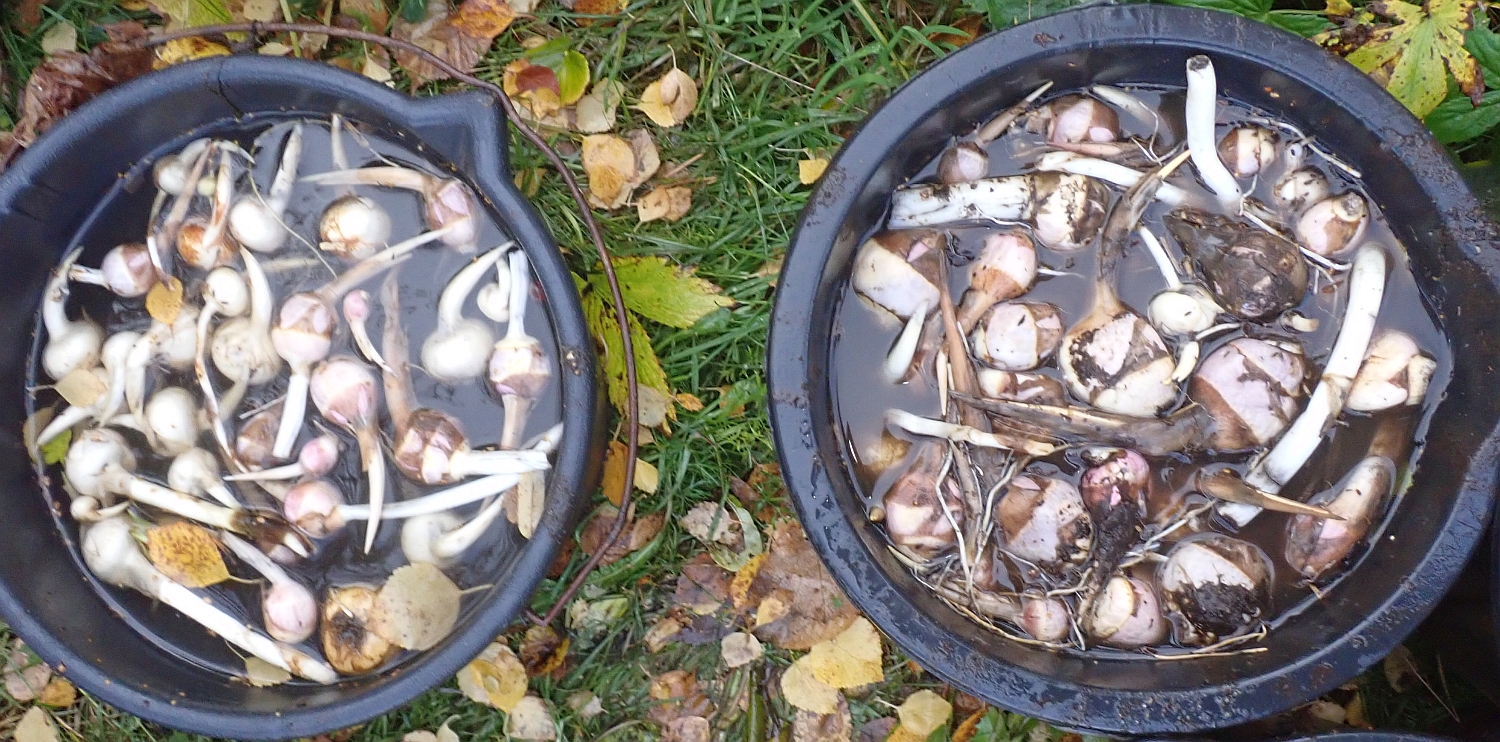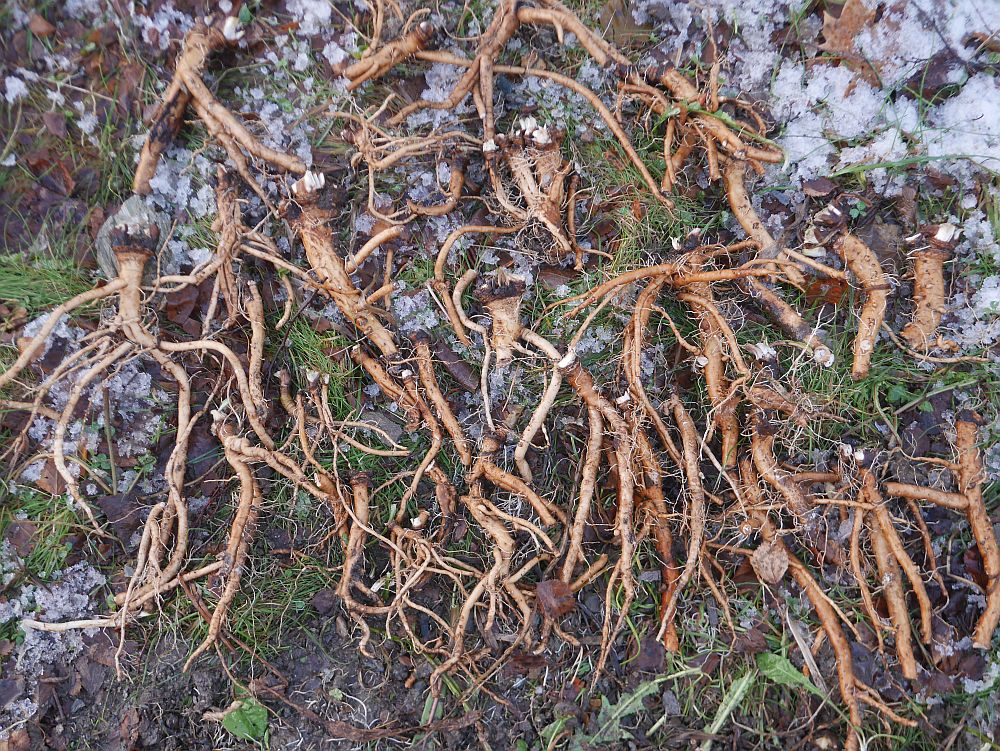Presenting this year’s 34 rhizophantastic Xmas vegetables, all roasted in the oven, served as every year in the last 40+ with veggie nut roast, bedecked with the following seeds / bulbils: alpine bistort / harerug (Polygonum viviparum), Himalayan balsam / kjempefringfrø (Impatiens glandulifera), evening primrose / nattlys (Oenothera biennis) and opium poppy (Papaver sominferum).
The tubers, rhizomes, corms, and fruits are listed below the pictures:
Solanum tuberosum (potato / potet); Blå kongo, Sarpo Mira, Sharpe’s Express, Troll, Knallfiffi, Truls
Daucus carota (carrot / gulrot)
Oxalis tuberosa (oca: 2 varieties)
Arctium lappa (burdock / borre)
Scorzonera hispanica (Scorzonera / scorsonnerot eller svartrot)
Tigridia pavonia (cacomitl)
Pastinaca sativa (parsnip / pastinakk)
Beta vulgaris (beetroot / rødbete); 2 varieties
Tropaeolum tuberosum (mashua)
Anredera cordifolia (Madeira vine)
Helianthus tuberosus (Jerusalem artichoke / jordskokk : 2 varieties)
Brassica rapa (turnip / nepe); 2 varieties
Dahlia “Yellow sneezy” (Dahlia / georginer)
Polymnia sonchifolia (yacon)
Sagittaria latifolia (wapato)
Allium cepa (onion / kepaløk)
Allium cepa ascalonicum “Ørskog” (shallot / sjalott)
Malus domestica (apple / eple)
Allium altissimum and Allium stipitatum (Persian shallots / Persisk sjalott)
Apium graveolens var rapaceum “Mars” (celeriac / sellerirot)
Sium sisarum (skirret / sukkerrot)
Dioscorea polystachya (Chinese yam, Cinnamon vine / kinesisk yams)
Allium sativum (garlic / hvitløk)
Cichorium intybus “Soncino” (root chicory / rotsikori)
Cirsium canum (Queen Anne’s thistle / Dronning Annes tistel)






































 I’m not head-banging to the potatoes….honest:
I’m not head-banging to the potatoes….honest:






